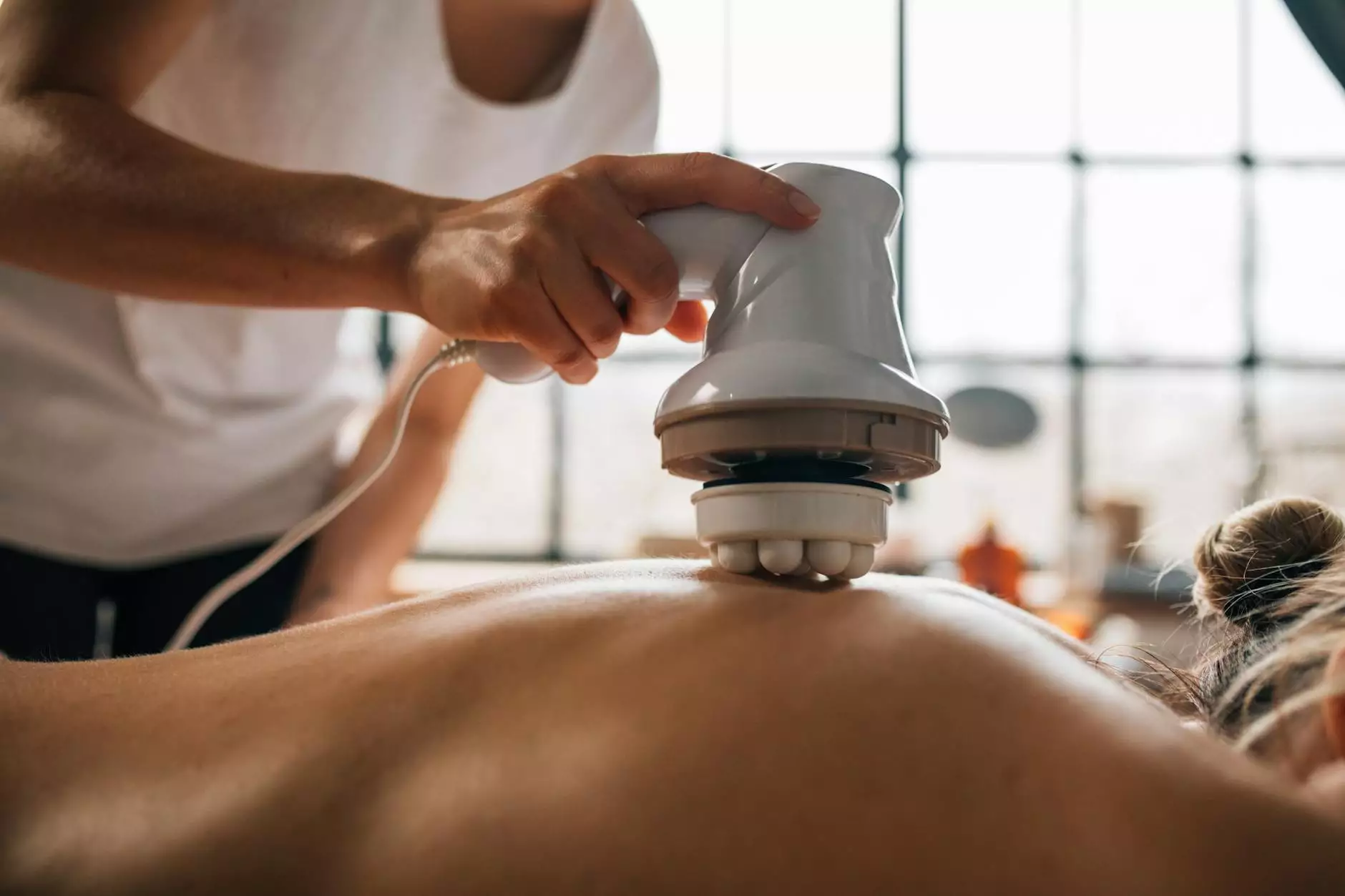Understanding Shoulder Pain on External Rotation

Shoulder pain, particularly during external rotation, is a common complaint that many individuals experience at some point in their lives. This type of discomfort can be debilitating, affecting daily activities and overall quality of life. In this comprehensive guide, we will delve into the causes, symptoms, and treatment options available for shoulder pain associated with external rotation, focusing specifically on insights valuable to those seeking relief through chiropractic care and other health interventions.
What is Shoulder Pain on External Rotation?
Shoulder pain during external rotation refers to the discomfort experienced when the arm is rotated away from the body. This motion is crucial for various activities, including reaching overhead, throwing, and even simple tasks like combing hair. Understanding the mechanics of shoulder pain can help identify the underlying causes and determine effective treatment strategies.
Common Causes of Shoulder Pain on External Rotation
The causes of shoulder pain on external rotation are diverse and may include:
- Rotator Cuff Injuries: The rotator cuff is a group of muscles and tendons that stabilize the shoulder. Tears, strains, or inflammation can lead to significant pain during external rotation.
- Impingement Syndrome: This condition occurs when the shoulder blade puts pressure on the rotator cuff tendons as the arm is lifted, causing pain.
- Frozen Shoulder (Adhesive Capsulitis): This condition is characterized by stiffness and pain in the shoulder joint, leading to restricted movement and discomfort during external rotation.
- Shoulder Bursitis: Inflammation of the bursa, a small fluid-filled sac that reduces friction in the shoulder joint, can result in pain during movement.
- Arthritis: Wear and tear of the shoulder joint from osteoarthritis or inflammatory conditions like rheumatoid arthritis can cause pain during external rotation.
Identifying Symptoms of Shoulder Pain on External Rotation
Recognizing the symptoms associated with shoulder pain during external rotation is crucial for effective diagnosis and treatment. Typical symptoms may include:
- Persistent Pain: A dull ache or sharp pain during and after external rotation of the shoulder.
- Stiffness: Difficulty moving the arm in a full range of motion, particularly when raising it or rotating it away from the body.
- Weakness: A noticeable decrease in strength, making it challenging to lift objects or perform specific movements.
- Swelling or Tenderness: Visible swelling around the shoulder joint or tenderness when pressure is applied.
- Night Pain: Discomfort that worsens at night, often disrupting sleep and daily activities.
The Importance of Early Diagnosis
Early diagnosis of shoulder pain on external rotation can significantly influence the effectiveness of treatment. If you experience persistent discomfort or any of the aforementioned symptoms, it's advisable to consult a health professional, such as a chiropractor or orthopedic specialist. They can perform a physical examination and may order imaging studies like X-rays or MRIs to ascertain the exact cause of the pain.
Effective Treatments for Shoulder Pain on External Rotation
Treatment for shoulder pain on external rotation can vary depending on the underlying cause. Here we outline several common treatment options:
1. Chiropractic Care
Chiropractors specialize in diagnosing and treating musculoskeletal disorders. Chiropractic adjustments can help relieve pain, improve mobility, and restore function in the shoulder joint. Techniques such as:
- Spinal Manipulation: Adjustments can relieve pressure on nerves and improve joint function.
- Soft Tissue Therapy: Massaging tight muscles around the shoulder helps reduce tension and improve blood circulation.
- Rehabilitation Exercises: Targeted exercises can strengthen the shoulder and improve flexibility over time.
2. Physical Therapy
Physical therapists provide tailored exercise programs designed to rehabilitate and strengthen the shoulder. They may utilize techniques such as:
- Stretching: Stretching exercises can enhance flexibility and reduce stiffness.
- Strengthening: Specific exercises aimed at building strength in the rotator cuff muscles.
- Manual Therapy: Skilled hands-on techniques to manipulate muscles and joints, facilitating pain relief and speedier recovery.
3. Medications
Over-the-counter or prescription medications can help manage pain and inflammation. Common options include:
- Nonsteroidal Anti-Inflammatory Drugs (NSAIDs): Ibuprofen or naproxen can reduce pain and swelling.
- Topical Analgesics: Creams or gels applied directly to the skin over the painful area may provide localized relief.
4. Injections
If conservative treatments are ineffective, corticosteroid injections may be considered to reduce inflammation in the shoulder joint. These injections can provide temporary relief but should be used judiciously.
5. Surgery
In cases where structural issues are identified, surgical intervention might be necessary. This can include:
- Arthroscopy: A minimally invasive procedure that allows the surgeon to repair rotator cuff tears or remove bone spurs.
- Shoulder Replacement: In severe cases involving arthritis or extensive damage, shoulder replacement surgery may be an option.
Preventative Measures for Shoulder Pain
Taking proactive steps to prevent shoulder pain can significantly enhance your quality of life. Here are several strategies to keep in mind:
- Ergonomics: Ensure your workspace is ergonomically designed to minimize strain during activities.
- Regular Stretching: Incorporate stretching routines into your daily activities to maintain flexibility and prevent stiffness.
- Strength Training: Engage in strength training exercises that focus on the shoulder and upper body to build muscle support and stability.
- Proper Warm-up: Always warm up before engaging in physical activities or sports that require shoulder movement.
When to Seek Professional Help
While minor shoulder discomfort may resolve with rest and ice, it's essential to consult a healthcare professional if:
- The pain persists beyond a few days.
- You experience swelling or visible deformities in the shoulder.
- Pain radiates into the arm, neck, or back.
- You have difficulty performing daily tasks that require shoulder movement.
Conclusion
Understanding shoulder pain on external rotation is vital for both prevention and treatment. With various potential causes ranging from rotator cuff injuries to arthritis, recognizing the symptoms and seeking appropriate care can lead to effective management of discomfort. Chiropractic care, physical therapy, and preventive strategies play essential roles in alleviating pain and restoring functionality. Remember, early intervention is key to regaining mobility and enjoying an active lifestyle. For personalized care tailored to your specific needs, consider consulting with a qualified chiropractor who can guide you on the path to recovery.
For more information about health and medical services related to shoulder pain and chiropractic care, visit iaom-us.com.








